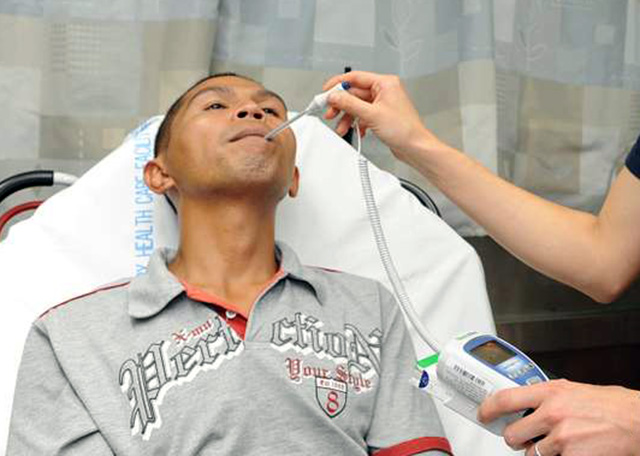Measuring core body temperature is necessary to understand the effect of environmental conditions on the body. The body is usually very effective in maintaining core body temperature in a narrow and safe range. During exercise, particularly in extreme conditions, the temperature may push the boundaries of this range.
 measuring oral temperature
measuring oral temperature It is important to monitor body temperature under such conditions, so that action may be taken to prevent permanent damage to the body if the body temperature is too high or too low.
Monitoring body temperature is commonly used in experimental research to determine the effect and increase the understanding how the body reacts and adapts to different exercise regimes or conditions.
Methods
- Basic mercury thermometer — this has been used for a long time to monitor if you have a fever. It is held in the mouth to measure oral temperature, and sometimes under the armpit for a period of time. This method is not suitable for use for during exercise.
- Ear thermometer — these are becoming popular as a method for measuring deep body (core) temperature. They work by measuring tympanic membrane temperature
- Rectal temperature — the use of a rectal probe in the past has been a common method to measure body temperature during exercise testing, and is one of the most accurate methods.
- Esophageal temperature — this method is not popular because of the difficulty of inserting the thermistor, irritation to the nasal passages and general subject discomfort during monitoring.
- Gastrointestinal radio pill — a small pill is swallowed which gives off a radio signal which is picked up by a monitor outside the body. Each pill is for a single use of course, and is quite expensive.
Related Pages
- Exercise in Extreme Conditions — articles and information
- Measuring WBGT — a composite temperature used to estimate the effect of temperature, humidity, and solar radiation on humans.
- Measurements in Sports Medicine
Disclaimer


 Current Events
Current Events